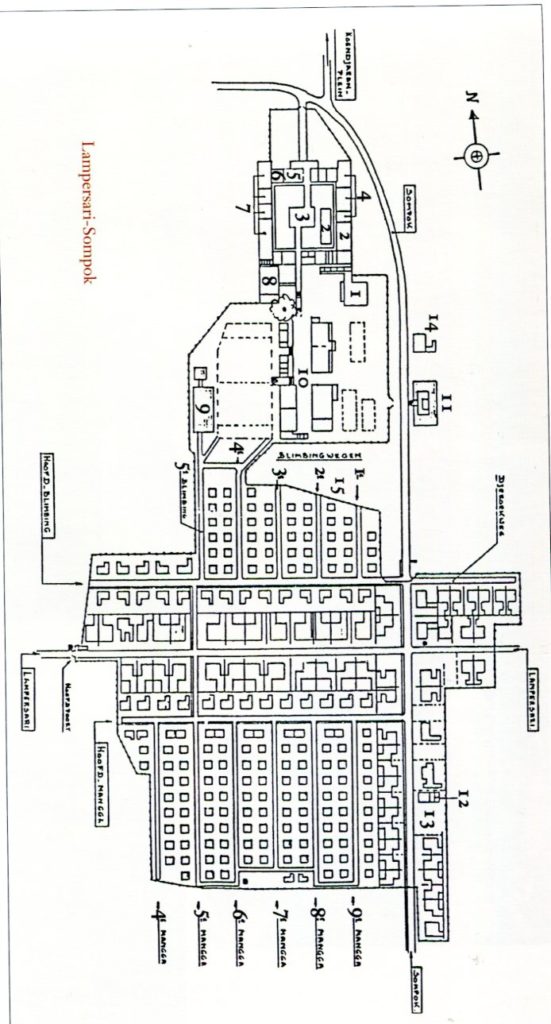Lampersari
Lampersari

Lampersari prison camp for women and children , was one of the the worst of the women’s and children’s camps on Java. It is one of three civilian camps in the Semarang area of Mid Java. This prison camp held about 8000 women and children under atrocious conditions , suffered from especially sadistic treatment by the Japanese guards of women trying to keep their children alive, and after the war had ended was repeatedly threatened with a massacre at the hands of out of control Indonesian youth.
Horrendous evidence of camp conditions presented by Lt Colonel Nicholas Reed Collins at the Tokyo Military tribunal , fails to convey the scale of the suffering at Lampersari by a wide margin. Torture was a daily occurrence.
A graphic description of Lampersari camp can be found in the book by Dr John K. Stutterheim. He had arrived in Lampersari from another camp with his mother and younger brother , and in mid 1944, was moved to a boys camp, Bangkong, also in the Semarang area. After news of the capitulation filtered through he returned to Lampersari to find his mother. He had to carry his brother from Bangkong to Lampersari. He had managed to maintain a diary , filled with drawings and acute observations.
A second source of information is the diary of Anneke Bosman, who spent the period 3 June 1945- 2 November 1945 in Lampersari. This eighteen year old girl managed to keep a diary (in Dutch) from the start of her internment in Bandung.
A third source : Gon Boissevain en Lennie Empel “Een dagboek Vrouwenkamp op Java” (1981, in Dutch ). Hard to get.
Another indication of the atrocious conditions of this camp can be inferred from the surviving list of names of camp occupants prepared by Mrs Ausems. This list is a copy of a fragment of the official camp list prepared at the behest of the Japanese Military administration, and lists the names of household heads and the number of dependents (children). The second list was assembled after the war had ended by former Red Cross staff recruited from among the internees. This list , also incomplete, notes the names of children who could no longer be cared for by their mothers.
Lampersari Camp description
The camp consisted of a cluster of houses on either side of Lampersari avenue in the coastal city of Semarang. A small number of houses were prewar European dwellings but the majority consisted of a so-called model kampong, an attempt by the prewar municipal authorities to provide subsidized housing for low income families. These tiny houses had a concrete floor, a one meter high concrete wall, and above that , walls made of woven bamboo strips (billik) and a corrugated iron roof. According to Anneke Bosman twenty two people shared this tiny dwelling.
Lady Edwina Mountbatten visited this camp as well as Halmahera on 24 September 1945 . Her biography mentions the visit but is light on details. Her official papers at Southampton University may contain more details.
Books
Kamp dagboek by Anneke Bosman
The Blue Door by Lise Kristensen
Photo Album
A large number of annotated photographs can be found in the Drakolic Photo album
Leave a Reply